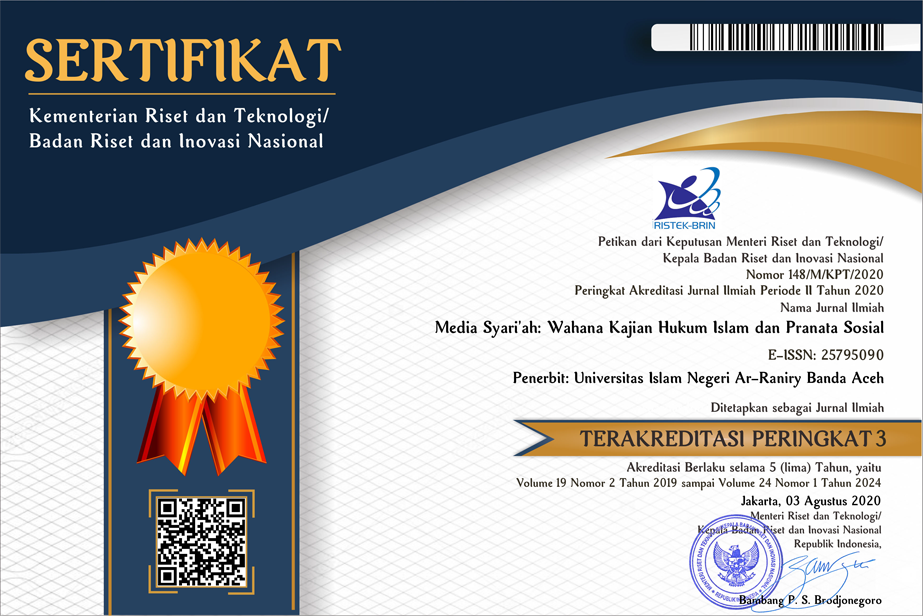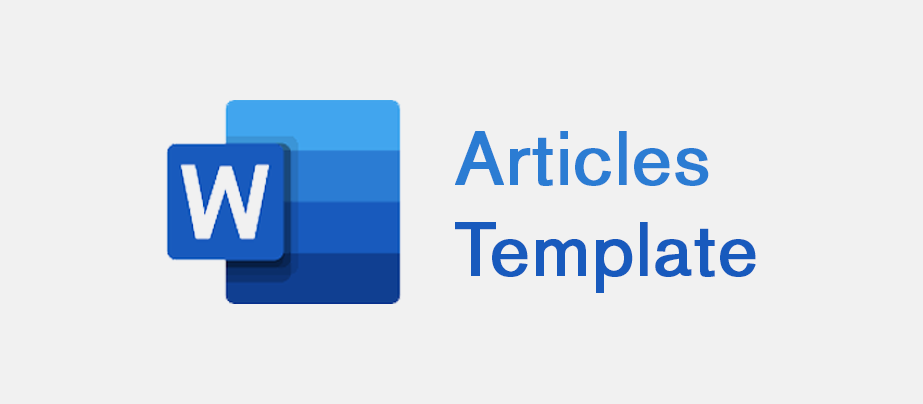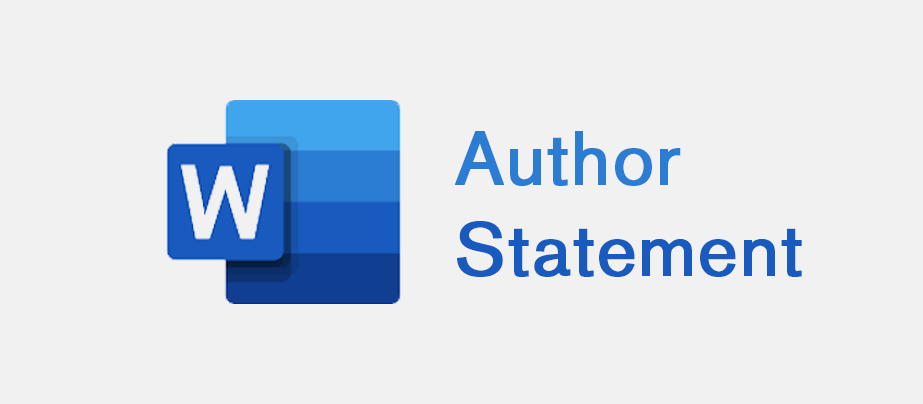Penggunaan Model “Angkat Bloe” dalam Wakaf Produktif: Justifikasi dan Hambatan (Waqf Productive Using “Angkat Bloe” Model: the Rationales and Obstacles)
DOI:
https://doi.org/10.22373/jms.v18i1.1836Keywords:
Ministry, Religious, Consequently, QuranicAbstract
Waqf is one of the instruments in Islamic economics to boost up the economic justice and welfare of society. Indonesia, as the largest Muslim country in the world, has the potency to utilize this sector. Per 2012, according to Ministry of Religious Affairs, there are 3.49 billion square meters of land waqf spreading in 420.003 locations all around Indonesia. If these numbers were converted into cash, it surely will result in a fantastic number. However, most of these lands were still unproductive (idle) as most of them are only used for building mosques, schools, funerals, and other unproductive buildings. In some provinces in Indonesia, like Aceh, the used of asset waqf other than what it was literally stated by the giver is prohibited. The rules were set by traditional religious clerics with very rigid interpretations. Consequently, it creates mindset of its people that waqf should be treated in such a rigid way although they knew it could be used for a bigger purpose and get bigger maslahah for the whole ummah. To change the mindset is not easy as it has been ongoing for generations. One of the way is by inserting the local value and approach into management waqf. In Aceh, there were many models of muamalah that have been practicing and living in the society for such a long time. Among many, Angkat Bloe model is seen suitable to be inserted into management waqf. Angkat Bloe is a kind of contract that is commonly used in trading activities for the purpose of the asset that has been sold to be returned. Prior transaction, the seller and buyer set an agreement that the asset will be sold back to the seller after the buyer operate it for certain times at the same price as it was sold. Based on the above explanation, this paper will try to put an effort in providing solutions by inserting the local model into management waqf. The model will be justified using Quranic verses and related hadiths, the concept of maslahah, the view of ulama. The rationales and possible obstacles will also be highlighted.References
Abd al-Qadir bin ‘Azuz (2004), Fiqh Istismar al-Waqf Wa Tamwiluhu Fi al-Islam, Disertasi Doktor, Universitas al-Jazair: Ulum al-Islamiyah.
Abd al-Rahman al-Asyimi (t.th), Majmu' al-Fatawa Syaikh al-Islam Ibnu Taimiyyah, juz. 22, t.tp. t.pn.
Achmad Djunaidi dan Thobieb al-Asyhar (2006), Menuju Era Wakaf Produktif Sebuah Upaya Progresif untuk Kesejahteraan Umat, Jakarta: Mitra Abadi Press.
Ali Ahmad Salus, Mausu’ah al-Qadhaya al-Fiqhiyah al-Mu’ashirah wa al-Iqtisad al-Islami, Kairo: Maktabah Dar al-Qur’an.
Ali Rido (1983), Badan Hukum dan Kedudukan Badan Hukum Perseroan, Perkumpulan, Koperasi, Yayasan, Wakaf, Bandung: Alumni.
Asbahani, Bayan al-Mukhtasar, Jilid 2, Kairo: Dar al-Salam, p. 286.
BPS Aceh Tahun 2013
Bulghah al-Salik, Jilid 3, p. 65; al-Dusuqi, Jilid 3.
Departemen Agama RI (1977), “Perkembangan Pengelolaan Wakaf di Indonesiaâ€, dikutip dari Rahmad Djatnika, Tanah Wakaf, Jakarta: Direktorat Pemberdayaan Wawkaf Dirjen Bimas Islam, 2006.
Departemen Agama RI (2006), Strategi Pengembangan Wakaf Tunai di Indonesia, Jakarta: Direktorat Pemberdayaan Wakaf, Dirjen Bimas Islam.
Imam Bukhari (1997), Sahih Bukhari, Jeddah: Maktab Darussalam.
Ibn Mandhur (1981), Lisan al-Arab, Jilid 6, Kairo: Dar al-Ma’arif.
Izz al-Din Syarun, “Asalib Istismar al-Waqf Fi al-Jazairâ€, al-Hijaz Internasional Refereed Journal For Islamic & Arabic Studies, Issue 8, Shawal 1435/August 2014, p. 160-199.
Kahf, M, (1993), Waqf and Its Sociopolitical Aspects, artikel elektronik dari website: http://www.kahf.net/papers.html.
Kahf, M, (1999), Towards the Revival of Awqaf: A Few Fiqhi Issues to Reconsider;
M. Abd. Al-Jawad, al-Milkiyyah al-Aradi fi al-Islam, Beirut: Mansya' al-Ma'arif.
M. Yasir Nasution (t.th), Rekonstruksi Fiqh Wakaf Berwawasan Ekonomi Syari’ah, dalam Azhari Akmal Tarigan dan Agustianto (peny.), Wakaf Produktif: Pemberdayaan Ekonomi Umat, Medan: IAIN Press.
Muhammad ‘Ubaid Abd Allah al-Kubaisy (1997), Ahkam al-Waqf Fi al-Syari’ah al-Islamiyah, Baghdad: Mathba’ah al-Irsyad.
Muhammad Abu Zahrah (1971), Muhadharat Fi al-Waqf, Kairo: Dar-al-Fikr al-Arabi.
Muhammad Badr al-Din, Nadariyat al-Maqasid Fi Fiqh al-Waqf, di akses dari http://www.alukah.net/publications_competitions/0/39869/#ixzz3Oj9hh8WU, pada tanggal 7 Januari 2015.
Munzir Kahf (2000), al-Waqf Fi al-Mujtama’ al-Islami al-Mu’asir, Beirut: Dar al-Fikr, p. 23-25
Mustafa Ahmad al-Zarqa’, Aqd al-Bai’, Dimasyq: Dar al-Qalam, 2012, Cet. II.
Musthafa Ahmad al-Zarqa’, Nidham al-Ta’min: Haqiqatuhu wa al-Ra’yu Syari’ fih, Cairo: Muassasah al-Rasalah, 1994. Hal. 36-37.
Nasrun Haroen, “Fiqh Muamalahâ€, Gaya Media Pratama, Jakarta, 2007, Hal. 126
Sayid Sabiq (t.th.), Fiqh al-Sunnah, Jilid 3, Kairo: Fath al-A’alam al-Arabi.
Sugianto, Perbankan Syariah dan Wakaf Produktif; Sebuah Proposal Produk Sosionomik.
Suparman Usman (1994), Hukum Perwakafan Di Indonesia, Jakarta: Dar al-Ulum Press.
Syarun ‘Izz al-Din, Asalib Istismar al-Waqf Fi al-Jazair, al-Hijaz International Refereed journal For Islamic&Arabic Studies, Vol. 8, Agustus 2014, p.160-199; Ahmad Muhammad Abd al-‘Adhim al-Jumal (2007), al-waqf al-Islami, Mesir: Dar al-Salam.
Syatibi, al-Muwafaqat Fi Usul al-Syari’ah, Jilid 4, Beirut: Dar al-Ma’rifah.
Syaukani (2004), Fath al-Qadir, Jilid 2,Beirut: Dar al-Ma’rifah.
Thaha Hamad Makhlaf al-Janabi dan Mas’ud Muhammad Ali, al-Sunnah al-Taqririyah: Ahkam Usuliyah wa Namazij Tathbiqiyah, (PDF) p. 351-366, di akses dari http://www.humanmag.uodiyala.edu.iq/uploads/pdf/aadad/2010/a43/16.pdf.
Wahbah al-Zuhaily (1985), al-Fiqh al-Islami wa Adillatuh, Jilid 8, Cet. II. Beirut: Dar al-Fikr.
Wahbah al-Zuhaily (1987), al-Wasaya wa al-Waqf Fi al-Fiqh al-Islami, Damaskus; Dar al-Fikr.
Yusuf al-Qaradhawi, al-Qawaid al-hakimah Li fiqh al-Mu’amlat, Doha: 2009.
Downloads
Published
Issue
Section
License
MEDIA SYARI'AH: Wahana Kajian Hukum Islam dan Pranata Sosial has CC-BY-SA or an equivalent license as the optimal license for the publication, distribution, use, and reuse of scholarly work. Authors who publish with this journal agree to the following terms:
1. Authors retain copyright and grant the journal right of first publication with the work simultaneously licensed under a Creative Commons Attribution-ShareAlike 4.0 International License that allows others to share the work with an acknowledgment of the work's authorship and initial publication in this journal.
2. Authors are able to enter into separate, additional contractual arrangements for the non-exclusive distribution of the journal's published version of the work (e.g., post it to an institutional repository or publish it in a book), with an acknowledgment of its initial publication in this journal.
3. Authors are permitted and encouraged to post their work online (e.g., in institutional repositories or on their website) prior to and during the submission process, as it can lead to productive exchanges, as well as earlier and greater citation of published work (See The Effect of Open Access).
You are free to:
Share — copy and redistribute the material in any medium or format.
Adapt — remix, transform, and build upon the material for any purpose, even commercially.
The licensor cannot revoke these freedoms as long as you follow the license terms.
All papers published in MEDIA SYARI'AH: Wahana Kajian Hukum Islam dan Pranata Sosial are licensed under a Creative Commons Attribution-ShareAlike 4.0 International License.



.png)


.png)
.png)
.png)



